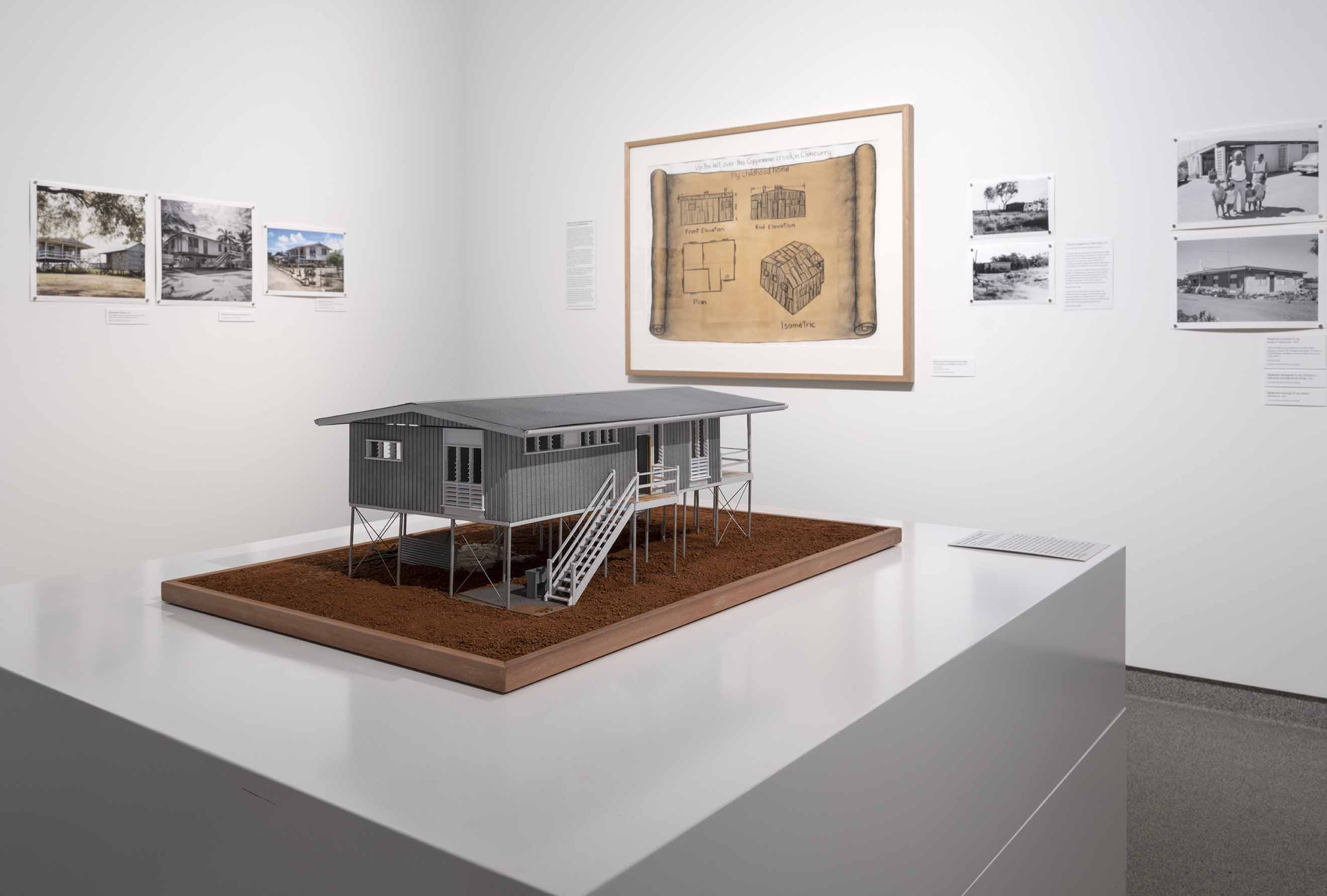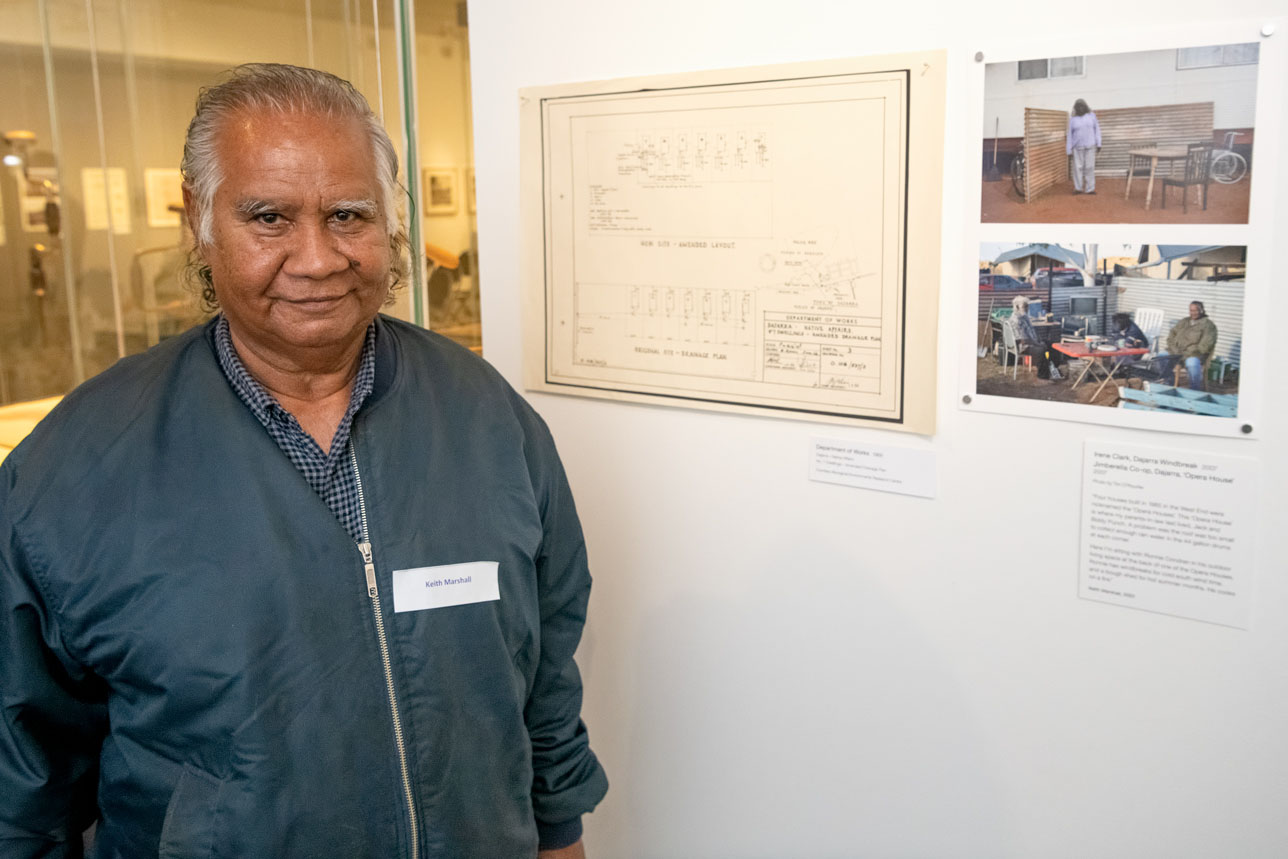Camps, Cottages, and Homes: A brief history of Indigenous housing in Queensland
The University of Queensland Anthropology Museum, 19 August–28 October 2022
Lead researchers: Professor Paul Memmott, Dr Timothy O'Rourke, Mandana Mapar, Michael Aird
The exhibition Camps, Cottages and Homes surveyed housing types occupied by Aboriginal and Torres Strait Islander peoples across Queensland between the 1930s and 1980s. Underpinned by research and objects from UQ's former Aboriginal Environments Research Centre (now ATCH), the place-based survey of Indigenous housing explored the significance of homes to Aboriginal and Torres Strait Islander people in different locations and conditions.
For much of the twentieth century, a combination of state legislation and geography affected Indigenous peoples’ housing conditions in settlements that included remote mission stations, fringe camps and compounds on the periphery of towns. On missions and government settlements, rudimentary cottages served colonial ideologies and policies that aimed to assimilate the inmates. In the late 1960s, houses designed in the state’s Department of Works, under the direction of the Department of Aboriginal and Islander Affairs, extended the assimilatory model of state housing in Queensland well into the 1980s. In Brisbane and regional towns, increasing numbers of Indigenous families rented Queensland Housing Commission homes under socially restrictive conditions.



In contrast to housing as a form of control, expressions of autonomy and self-reliance were a persistent theme in the different settlement types, where typically residents endured the consequences of neglect in both housing design and supply. Despite the state’s overarching assimilatory agenda, the exhibition presented counter narratives that highlight widespread Indigenous participation in constructing housing and the deep attachment of residents to self-built homes in informal town camps and state supplied housing. Between 1976 and 1985, workers in Cherbourg manufactured prefabricated housing for use in the settlement and shipped to remote Aboriginal and Torres Strait Islander communities and country towns across Queensland. From the 1970s, Aboriginal and Torres Strait Islander housing associations provided greater autonomy in decisions about community housing, growing to over 80 incorporated Indigenous run organisations by the early 1980s.
In researching content for the exhibition, archival photographs were used to elicit stories from residents about homes that indicated the resistance and adaptation to changing political and physical environments. These narratives were complemented by architectural drawings and models, and social media commentary on the exhibition. Renowned artist Gordon Hookey documented his childhood home in the Coppermine Creek Camp on the fringe of Cloncurry, a towncamp that had been photographed by UQ architecture students in 1972 and 1973.
The exhibition drew on 50 years of community and housing research in the Aboriginal Environments Research Centre enriched by the knowledge and stories of Aboriginal and Torres Strait Islander peoples. Architectural drawings, photographs and documents were sourced from the Queensland State Archives, the State Library of Queensland, National Archives of Australia, and The University of Queensland's Fryer Library complemented the AERC’s collection. Places featured included Aurukun, Acacia Ridge, Birdsville, Boulia, Cairns, Cape Bedford, Cherbourg, Cloncurry, Coopers Plains, Dajarra, Darnley Island, Dunwich, Ipswich, Inala, Mapoon, Mornington Island, Myora, Mt Isa, Normanton, Palm Island, Torres Strait Islands, Urandangi, Weipa, Woorabinda, Yarrabah and Zillmere. Community forums in the museum prompted discussion about housing histories and current housing challenges for First Nations peoples.
This novel exhibition engaged industry, government, academia and the wider community to recount untold histories of Indigenous people and places through an architectural lens. The exhibition was generously supported with philanthropic contributions from Queensland architecture practices and support from the Queensland State Archives and Fryer Library.
QSA Talks: Learning from the Archives – Architecture and Indigenous housing with Dr Timothy O’Rourke
| Researchers | Michael Aird, Director, UQ Anthropology Museum Professor Paul Memmott Mandana Mapar, Curator, UQ Anthropology Museum Dr Timothy O'Rourke |
| Colaborators | Michael Aird, Director, UQ Anthropology Museum Mandana Mapar, Curator, UQ Anthropology Museum |
| Exhibition | The Australian Institute of Architects |
